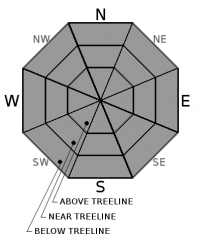| Thursday | Thursday Night | Friday | |
|---|---|---|---|
| Weather: | Mostly to partly cloudy with periods of sun in some areas | Mostly cloudy becoming partly cloudy to mostly clear | Partly cloudy to mostly sunny |
| Temperatures: | 48 to 54 deg. F. | 30 to 35 deg. F. | 54 to 60 deg. F. |
| Mid Slope Winds: | Southwest | Southwest | Southwest |
| Wind Speed: | 10 to 15 mph with gusts to 35 mph | 10 to 15 mph in the evening decreasing overnight. Gusts to 30 mph | Light in the morning increasing to 10 to 15 mph in the afternoon. Gusts to 30 mph. |
| Expected snowfall: | 0 | 0 | 0 |
| Thursday | Thursday Night | Friday | |
|---|---|---|---|
| Weather: | Mostly to partly cloudy with periods of sun in some areas | Mostly cloudy becoming partly cloudy to mostly clear | Partly cloudy to mostly sunny |
| Temperatures: | 42 to 50 deg. F. | 28 to 34 deg. F. | 48 to 56 deg. F. |
| Ridge Top Winds: | Southwest | Southwest | Southwest |
| Wind Speed: | 25 to 40 mph with gusts to 65 mph decreasing to 25 to 35 mph with gusts to 50 mph in the afternoon | 15 to 25 mph with gusts to 50 mph | 15 to 25 mph with gusts to 50 mph |
| Expected snowfall: | 0 | 0 | 0 |























